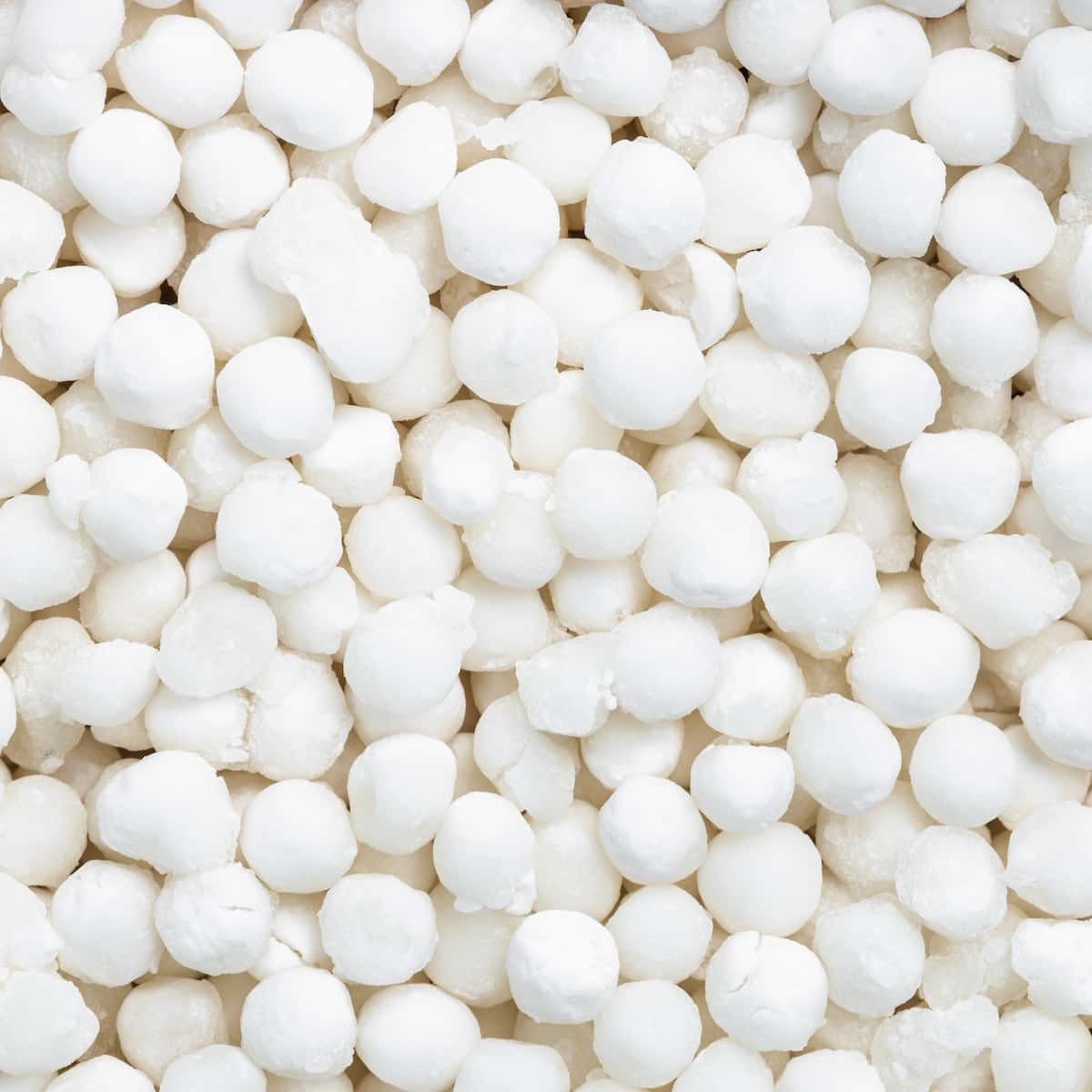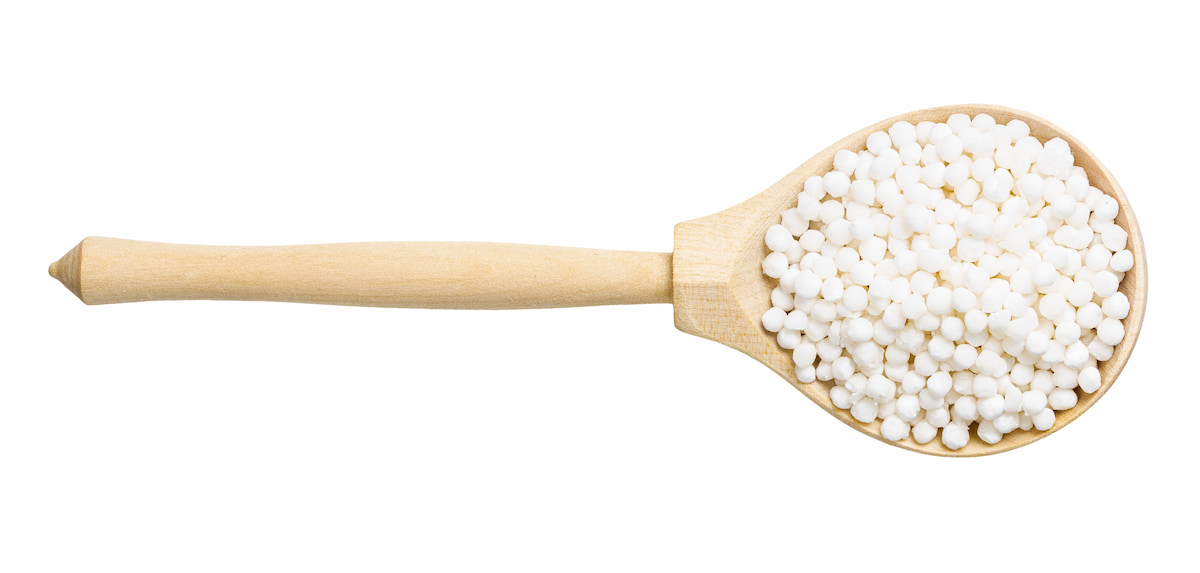Did you know what sabudana is and how it’s extracted? Sabudana’s underrated worth and origin facts are surprising. This famed great food and its palm tree extraction are explained here. Sago, also known as sabudana, is a processed edible starch available in small globules or flakes. It is highly valued as a food source for infants and invalids due to its easy digestibility.

Sago was originally manufactured from the pith of the Sago palm in Malaysia and Indonesia and was named after the plant. However, tapioca and potato starches are now the major sources of Sago worldwide. Tropical dwellers have eaten it for centuries. It is savored worldwide in many ways. Some make cereal, Khichdi, pancakes, rolls, and fries. Sago pearls are sold widely, making them easy to cook. These beads are made from cassava starch, which comes from tropical palm tree roots rather than sago starch.
Sabudana/Sago Project Report
History of Sabudana/Sago Cultivation
It is widely used in Indian cuisine, especially in Sabudana Khichdi, Vada, and Kheer dishes. Sabudana/Sago also produces several popular Indian snacks, such as Sabudana Papad and Sabudana Wafers. Sabudana/Sago has a rich history in India, where it has been cultivated and used for centuries.
The Sago palm is believed to have originated in Southeast Asia and was introduced to India by early traders and settlers. Today, Sabudana/Sago cultivation is primarily concentrated in Tamil Nadu, Kerala, and Karnataka. As the demand for Sabudana/Sago continues to grow, there is a need for sustainable and responsible farming practices to ensure its long-term availability and economic viability.
How is Sabudana/Sago Extracted?
Sago is made from the pith of Metroxylon palms through a labor-intensive process of starch extraction and refinement. The unripe palm stem is slit open, and the pith is extracted and pulverized to extract the starch. The starch is then rinsed and kneaded repeatedly to extract the purest form of starch possible. This powder can then be used in a variety of dishes. Sago extraction is a time-consuming and labor-intensive procedure, typically performed on a large scale using modern machinery.
Market and Demand for Sabudana/Sago Cultivation
Sabudana or Sago is a prominent food ingredient used worldwide, particularly in Asia-Pacific. Sabudana/Sago is primarily produced in India, Indonesia, and Malaysia, with India being Sago’s largest producer and consumer. The market demand for Sabudana/Sago is increasing due to its adaptability, storage convenience, and longevity.
Sabudana/Sago cultivation is a lucrative agribusiness driven by the food and beverage industry, particularly the bakery and confectionery sectors. To ensure optimal production and profitability, the cultivation of Sabudana/Sago necessitates careful planning, crop management, and marketing techniques.
Best Package and Practices for Sabudana/Sago Cultivation
Specific climatic and soil conditions are needed for sago farming. Sago is best grown in sandy loam soil with a pH range of 4.5 to 6.5 and excellent drainage. Sago’s palms need a lot of water, so the location chosen for cultivation should have access to water for irrigation. The land is first made free of all weeds, tree stumps, and vegetation. After that, the soil is leveled and tilled to prepare for planting. Offshoots, tiny plants that emerge from the adult palms’ bases, are how sago palms are multiplied.
In case you missed it: Barnyard Millet (Sanwa) Production Guide: A Step-By-Step Cultivation Practices

The offshoots are dug up and planted about 4 meters apart in the soil that has been prepped. The young palms are routinely watered for the first year to promote growth. Once the palms are established, less watering is necessary, but the soil should only dry out partially. Applying fertilizer every six months will guarantee healthy growth and a maximum yield.
The sago trees mature in seven to fifteen years and are ready to be harvested. Cutting down the palm, splitting it crosswise, and removing the pith are all steps in the harvesting process. The starch is then released from the pith by crushing and kneading, and it is gathered in settling receptacles. Sago beads are created by washing and drying the starch, after which.
Proper cultivation techniques are crucial to guarantee a large yield of high-quality sago pearls. Regular watering, fertilization, and weeding are essential for plants to develop healthily. Appropriate land preparation and palm spacing are major in ensuring maximum yield. Sago cultivation can be lucrative for farmers with the right care and management. Harvesting at the right time is essential to obtain the best quality starch.
Cost of Sabudana/Sago Project
A Sabudana processing factory requires several different things to be set up, such as raw materials, equipment, labor, and operating expenses. An overview of the costs associated with starting up a little business for Sambuca processing can be found below.
Raw Materials
The agricultural food product tapioca sago (Sabudana) is processed and prepared for cooking. The only raw ingredient used to make Sabudana is “tapioca root,” also known as “cassava” globally. The cassava is soaked in water for a few hours, then crushed, and the starch is extracted. The starch is then processed into sago pearls. The average cost of cassava cultivation for sago production was around $200-$300 per acre. This includes the cost of seeds, labor, fertilizers, pesticides, and anything else needed to grow crops.
Equipment Needed
A cleaning machine, a peeling machine, a grating machine, and a drying machine are among the equipment needed to set up a Sabudana processing factory. A sieving machine, a pulverizer, and a packing machine could also be necessary. The approximate cost for machines is around $15,000 to $35,000.
Labor
Sago processing is a labor-intensive process. You will need skilled and unskilled laborers to operate the machinery and perform the processing activities. The approximate labor cost can be around $3,000 to $8,000 annually.
Cost to Set Up Small Unit
The price to set up a small Sabudana manufacturing unit will vary depending on the plant’s location, size, level of equipment, Land rent, and other costs. To start up a small unit, you should budget between $25,000 to $40,000 on average.
Profits from Sabudana/Sago Project
On average, one ton of cassava tuber can produce around 250-500 kg of finished Sabudana or Sago pearls based on the size of the pearls produced. The exact yield may differ based on many factors, including the quality of the cassava tubers, the technique used for processing them, and the workers’ skill level. The average price can range from $1.5 to $4 per kg for finished Sabudana or Sago pearls based on size, grade, and quality. A standard profit margin is between 20 and 25 percent.
Business Plan for a Sabudana/Sago Medium Size Plant
A business plan for a Sabudana processing plant should include details such as the location, the target market, the marketing strategy, the production process, the quality control measures, and the financial projections. A medium-sized Sabudana/Sago plant with a capacity of 10 tons per day could require a total capital expenditure of around Rs. 6.00 crore. The investment will pay for the cost of the land, the structure, the equipment, and the operating capital for two months.
In case you missed it: 1 Acre Cassava Cultivation Project Report: Production Cost and Profit

The expected rate of return for the company is 35%, which suggests that it has the potential to make sizable profits. According to estimates, the company’s break-even point is 46% of sales, when it can start recovering its expenses and turning a profit. Sabudana/Sago company’s success depends on having a strong marketing plan, upholding strict quality controls, and streamlining the manufacturing procedure. To remain ahead of the competition and track market trends, it is also essential to continuously enhance both the product and business operations.
Conclusion
With a low initial investment expense, the Sabudana/Sago project has the potential to be financially successful. Business planning requires implementing effective production techniques, focusing on product quality, and targeting different market segments. In general, the undertaking has the potential to be a profitable and long-lasting business endeavor.
- Feed Your Flock for Less: Top 10 Tips to Save on Chicken Feed
- Ultimate Guide to Ossabaw Island Hog: Breeding, Raising, Diet, and Care
- Hatching Answers: The Top 10 Reasons Your Chickens Aren’t Laying Eggs
- Eggs and Economics: Breaking Down the Cost of Raising Backyard Chickens
- Defend Your Greens: Proven Methods to Keep Iguanas Out of Your Garden
- Ultimate Guide to Cinnamon Queen Chicken: A Comprehensive Guide for Beginners
- Ultimate Guide to California Tan Chicken: Breeding, Raising, Diet, Egg-Production and Care
- Ultimate Guide to Marsh Daisy Chicken: Breeding, Raising, Diet, and Care
- 10 Types of Chicken Farming Businesses You Can Start for Profits
We are looking for sabudana making machine